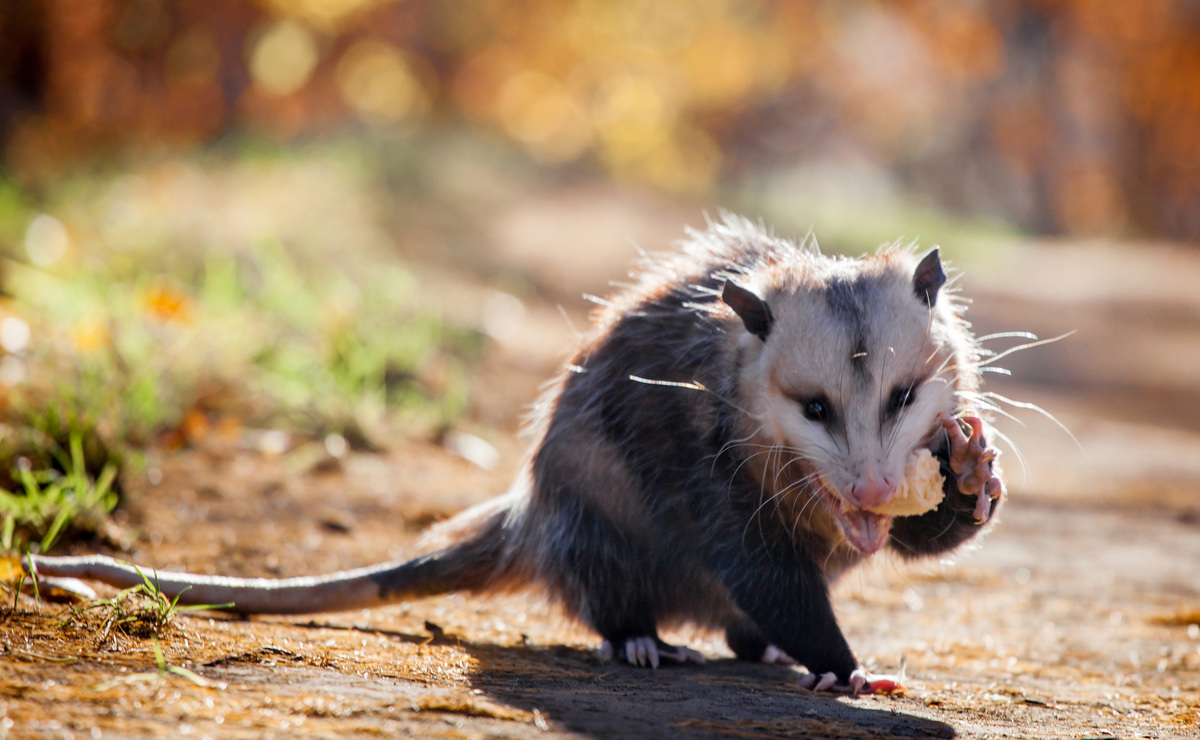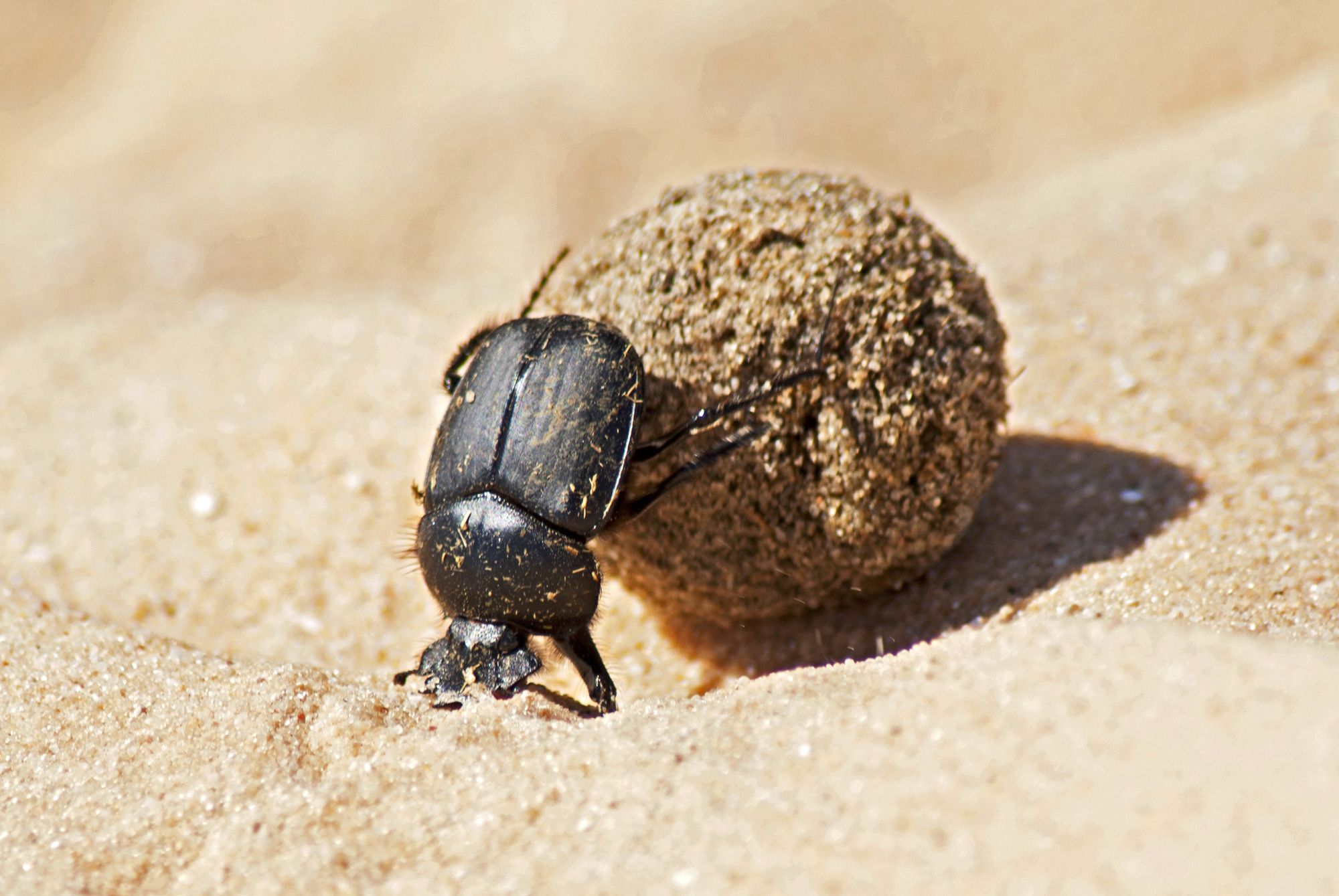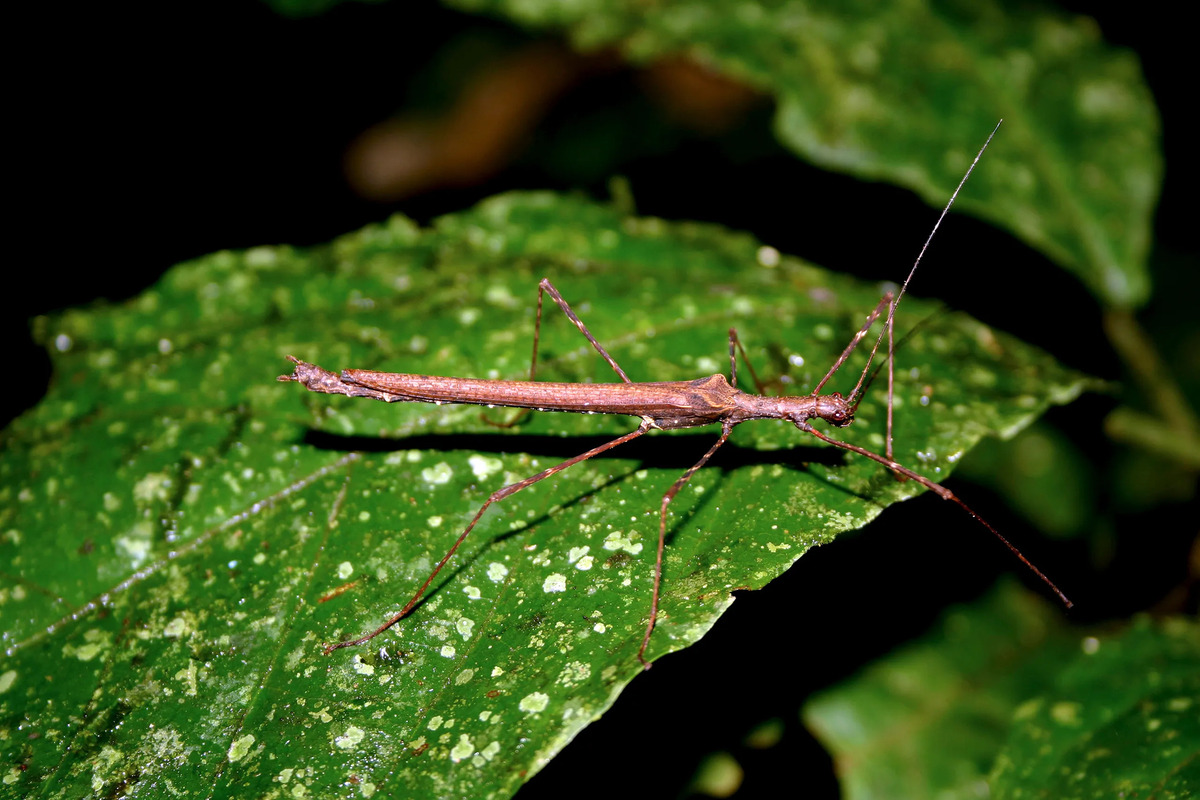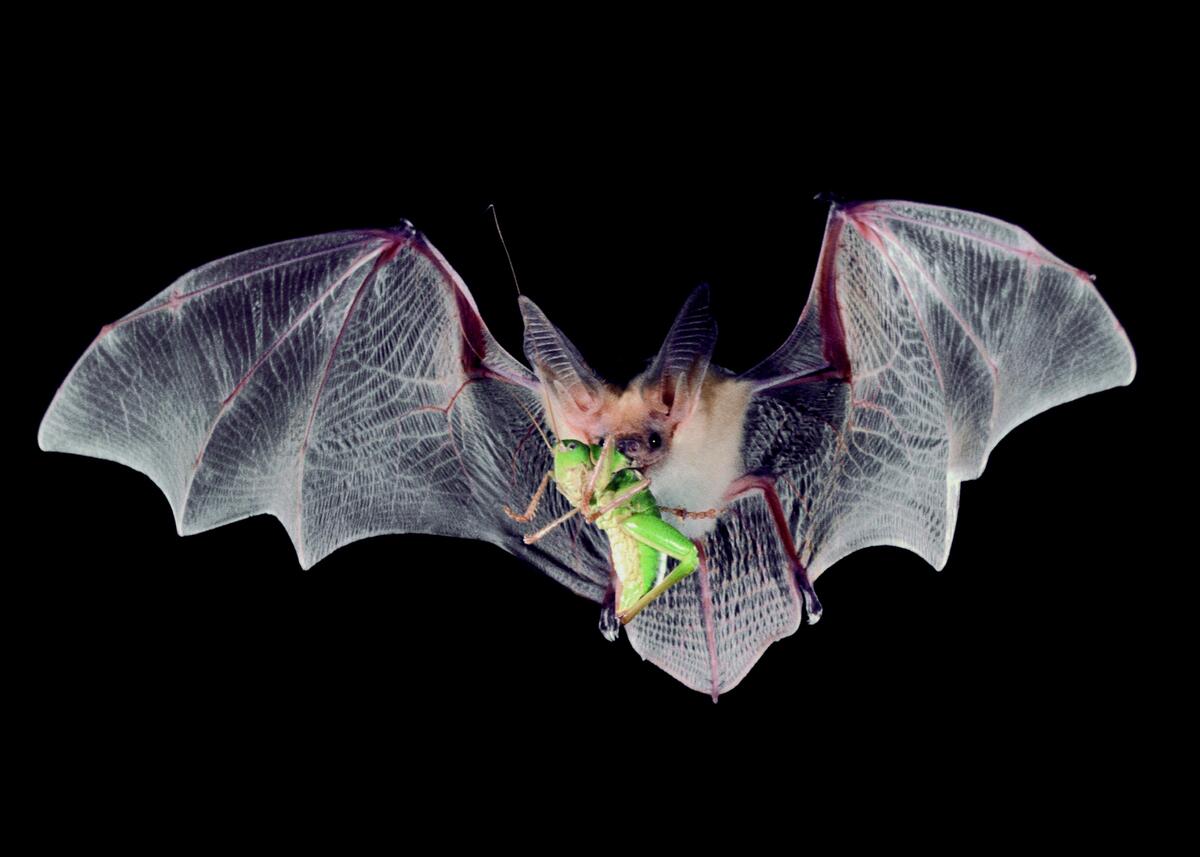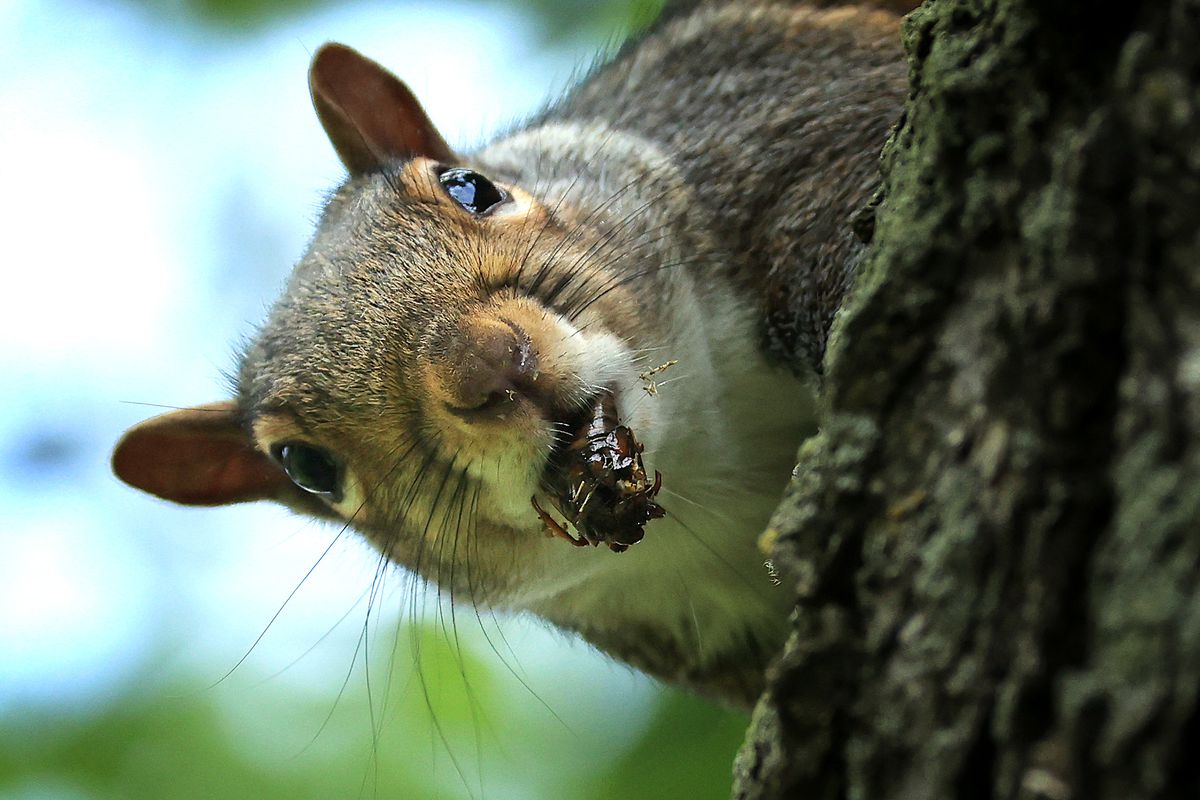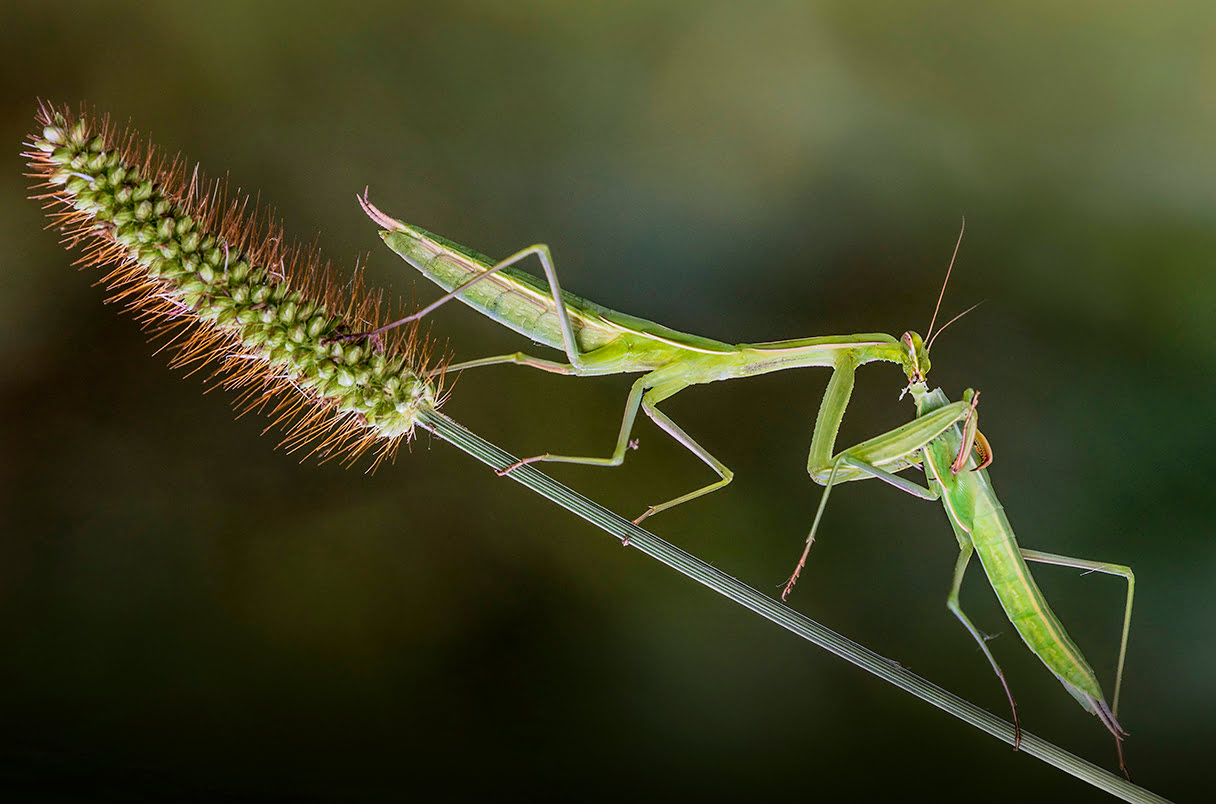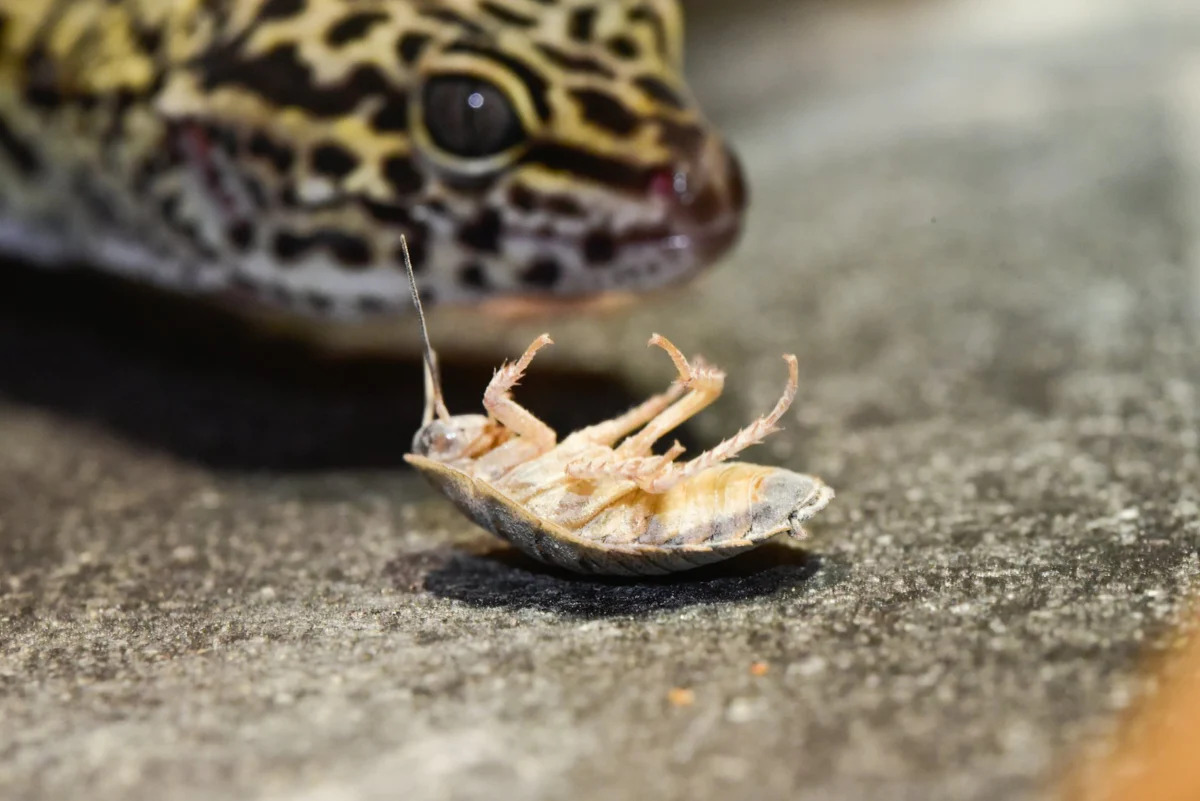Home>Gardening News and Trends>Latest News>What Insects Do Ladybugs Eat


Latest News
What Insects Do Ladybugs Eat
Modified: January 22, 2024
Discover the latest news on what insects ladybugs eat. Learn about the diet of ladybugs and how they help control pests in your garden.
(Many of the links in this article redirect to a specific reviewed product. Your purchase of these products through affiliate links helps to generate commission for Chicagolandgardening.com, at no extra cost. Learn more)
Table of Contents
Introduction
Ladybugs, also known as ladybirds or lady beetles, are small insects that are well-known and beloved by gardeners and nature enthusiasts. These little creatures are not only visually appealing with their vibrant colors and distinctive spots, but they also serve an important role in maintaining the balance of ecosystems. Ladybugs are considered beneficial insects due to their voracious appetite for certain types of pests that can wreak havoc on plants and crops.
In this article, we will explore the diet of ladybugs and shed light on what these fascinating insects eat. We will delve into their predatory nature, the primary prey they target, and additional food sources they may consume. Additionally, we will discuss the factors that influence ladybug feeding habits and highlight the crucial role ladybug predation plays in biological control.
So, if you’ve ever wondered what insects ladybugs feast on and how they contribute to pest control, read on to discover the intriguing world of ladybug dining habits.
Ladybugs: A Beneficial Insect
Ladybugs are often hailed as one of nature’s greatest helpers in the fight against garden pests. These small, winged creatures provide invaluable assistance in biological control, naturally reducing populations of harmful insects that can damage crops and plants.
One of the key reasons ladybugs are considered beneficial is their diet. They primarily feed on soft-bodied insects such as aphids, mites, mealybugs, and scale insects. These pests can cause immense harm to plants by sucking their sap and depleting their resources. Ladybugs step in as the ultimate pest control agents, devouring large numbers of these damaging insects in a short amount of time.
Furthermore, ladybugs are known to engage in a behavior called “aphid farming.” They lay their eggs near aphid colonies and cover them with a protective secretion called “brochosomes.” As the ladybug larvae hatch, they have easy access to a readily available and abundant food source. This unique adaptation allows ladybugs to maximize their efficiency in combating aphids.
In addition to their pest control abilities, ladybugs are also beneficial for the pollination of certain plants. While they primarily rely on insect prey for sustenance, ladybugs occasionally supplement their diet with pollen and nectar. As they travel from flower to flower, they inadvertently transfer pollen grains, aiding in the fertilization process and promoting the reproduction of various plant species.
Overall, ladybugs play a vital role in maintaining the health and balance of ecosystems. Their presence in gardens and agricultural fields helps to naturally control pest populations, reducing the need for harmful pesticides. By acting as nature’s pest control superheroes, ladybugs contribute to sustainable and environmentally-friendly methods of agriculture.
Ladybug Diet: What Do They Eat?
Ladybugs have a diverse diet, but their primary focus is on consuming soft-bodied insects. The most common and preferred food source for ladybugs is aphids. These small, sap-sucking insects can multiply rapidly and cause extensive damage to various plants.
A single ladybug can consume a large number of aphids in just one day. Their ability to devour these pests at such a rapid rate makes them an efficient and effective natural predator. Ladybugs use their specialized mouthparts to puncture the bodies of aphids and extract their vital fluids, ultimately causing their demise.
In addition to aphids, ladybugs also feed on other soft-bodied insects including mites, mealybugs, scale insects, and whiteflies. These pests can infest plants and weaken them by feeding on their tissues and sap. Ladybugs prey on them to maintain the health and vitality of the plants they reside on.
While ladybugs primarily rely on these insect prey for sustenance, they occasionally supplement their diet with other food sources. Ladybugs have been observed consuming pollen and nectar from flowers, particularly when prey populations are low. This allows them to obtain the necessary nutrients and energy when their primary food source is limited.
It is important to note that ladybugs have certain preferences when it comes to their diet. They tend to favor smaller prey, as they are easier to handle and consume. However, if smaller prey is scarce, ladybugs have the ability to tackle larger insects as well.
The specific food choices of ladybugs can vary depending on factors such as their species, habitat, and the availability of prey. These adaptable insects are capable of adjusting their diet to suit their surroundings and ensure their survival.
In the next section, we will explore the predatory nature of ladybugs in more detail, uncovering the fascinating techniques they employ to capture and consume their prey.
Carnivorous Ladybugs: Their Predatory Nature
Ladybugs are renowned for their voracious appetite and predatory nature. These small beetles have evolved to be highly efficient hunters, equipped with specialized adaptations to capture and consume their prey.
One of the key features that make ladybugs effective predators is their mouthparts. Ladybugs have mandibles that are perfectly suited for piercing and sucking out the bodily fluids of their prey. They use these mandibles to puncture the soft bodies of insects, extracting their nutritious fluids while leaving behind the exoskeleton and other indigestible parts.
In addition to their mandibles, ladybugs have another unique adaptation called a “prothoracic gland.” This gland secretes a yellow, sticky substance known as “reflex blood” or “hemolymph.” When threatened or disturbed, ladybugs release this substance from their leg joints, deterring potential predators and making them unpalatable.
Ladybugs also display a fascinating behavior known as “guttation feeding.” During the early morning hours or after rainfall, plants often excrete droplets of liquid known as guttation fluid. Ladybugs have been observed drinking this fluid, which contains amino acids and sugars, to supplement their diet and obtain additional nutrients.
Another intriguing aspect of ladybug predation is their use of chemical cues to locate prey. When aphids and other insects feed on plants, they release chemical signals called “alarm pheromones.” These pheromones alert ladybugs to the presence of nearby prey, allowing them to hone in on their target and launch a swift attack.
It is worth noting that ladybugs are not indiscriminate predators. They have the ability to detect certain chemical compounds or colors that may indicate the presence of toxic prey, which they avoid consuming.
Overall, ladybugs exemplify the fascinating world of carnivorous insects. Their specialized adaptations, including their mouthparts, reflex blood, guttation feeding, and use of chemical cues, enable them to be highly efficient predators in their quest for food.
Next, let’s explore the primary prey that ladybugs target and the significance of their predation in biological control.
Primary Prey of Ladybugs
The primary prey of ladybugs consists of soft-bodied insects, with aphids being their most favored delicacy. Aphids are small, sap-sucking insects that can cause significant damage to a wide range of plants, including agricultural crops and garden plants.
Aphids reproduce rapidly, producing large populations in a short period of time. This rapid reproduction can lead to infestations that can potentially decimate plants and crops. However, ladybugs step in as nature’s pest control agents, keeping aphid populations in check.
Ladybugs have a remarkable ability to locate aphids, thanks to their highly sensitive sensory organs and use of chemical cues. Once ladybugs detect the presence of aphids, they seize the opportunity to satisfy their voracious appetite.
Using their mandibles, ladybugs puncture the soft bodies of aphids and extract their vital fluids. The high protein content in aphids serves as a valuable source of nutrition for ladybugs, allowing them to grow, develop, and reproduce.
In addition to aphids, ladybugs prey on other soft-bodied insects including mites, mealybugs, scale insects, and whiteflies. These pests can infest plants and cause damage by sucking their sap and weakening their structure. By targeting and consuming these pests, ladybugs effectively protect plants and help maintain their overall health.
Ladybugs have been observed to consume astonishing numbers of aphids and other soft-bodied insects. In fact, a single ladybug can devour hundreds of aphids within a span of just a few days. This predatory behavior helps keep pest populations in check, preventing excessive damage to plants and crops.
The effectiveness of ladybugs as biocontrol agents has made them a popular choice for organic farmers and gardeners seeking sustainable pest management solutions. Rather than relying on harmful chemical pesticides, ladybugs offer a natural and environmentally-friendly solution to combat pest infestations.
In the next section, we will explore additional factors that can influence the feeding habits of ladybugs and delve into their ability to find alternative food sources when prey populations are low.
Additional Food Sources for Ladybugs
While ladybugs primarily rely on soft-bodied insects like aphids as their main food source, they are also known to consume alternative foods when their preferred prey is scarce or unavailable. This adaptability allows ladybugs to survive and thrive in various environments.
One such alternative food source for ladybugs is pollen. Ladybugs have been observed feeding on pollen from a variety of flowers. While pollen does not provide the same high protein content as their primary prey, it does offer additional nutrients and energy for ladybugs.
Ladybugs can be particularly attracted to flowers with open structures and abundant pollen. As they feed on the pollen, ladybugs inadvertently help with the pollination process by transferring pollen grains between flowers, contributing to the reproduction of various plant species.
Nectar is another potential food source for ladybugs. Like pollen, nectar is not a primary food for ladybugs but can serve as a supplemental source of energy. They may occasionally sip on nectar from certain flowers that produce sugary, sweet fluids.
In addition to pollen and nectar, ladybugs have been observed consuming honeydew. Honeydew is a sticky, sugary substance excreted by sap-sucking insects like aphids and scale insects. When ladybugs come across honeydew on plants, they may indulge in this sweet treat to supplement their diet.
It is important to note that while ladybugs can consume alternative food sources, their primary focus remains on feeding on soft-bodied insects. These alternative food sources can serve as a temporary solution when their preferred prey is in limited supply.
The availability of alternative food sources can vary depending on factors such as the season, location, and plant diversity in the area. Ladybugs are adaptable creatures and can adjust their feeding habits based on the resources available to them.
By diversifying their diet and taking advantage of alternative food sources, ladybugs demonstrate their ability to survive in various ecological conditions and ensure their continued population growth.
In the next section, we will explore the factors that can influence the feeding habits of ladybugs, shedding light on the complexities of their dietary preferences.
Factors Affecting Ladybug Feeding Habits
Ladybugs’ feeding habits can be influenced by various factors, including environmental conditions, prey availability, and their developmental stages. These factors play a crucial role in determining the dietary preferences and behavior of these fascinating insects.
One of the key factors that affect ladybug feeding habits is temperature. Ladybugs are ectothermic creatures, meaning their body temperature is regulated by the external environment. They are most active in warm weather when prey populations are typically higher. As temperatures cool down, ladybugs become less active and may reduce their feeding activity.
The availability of prey is another important factor. Ladybugs will naturally seek out areas where their preferred prey, such as aphids, is abundant. If aphid populations are low or have been controlled through other means, ladybugs may need to search for alternative food sources to sustain themselves.
The development stage of ladybugs can also impact their feeding habits. Ladybug larvae, which resemble tiny alligators, are highly active and voracious predators. They consume large quantities of prey during this stage as they undergo rapid growth and development. As they transition into the pupal stage and eventually emerge as adult ladybugs, their feeding activity may decrease.
Another factor that can affect ladybug feeding habits is the presence of natural enemies or predators. Ladybugs have various predators, including birds, spiders, and certain wasps. When ladybugs perceive a threat from these predators, they may reduce their feeding activity and become more cautious.
The surrounding vegetation and habitat diversity can also play a role in influencing ladybug feeding habits. A diverse range of plant species can provide a greater variety of prey insects and alternative food sources, ensuring a more sustainable food supply for ladybugs.
Additionally, the availability of suitable shelter and overwintering sites can impact ladybug feeding behavior. Ladybugs require safe places to hibernate during the winter months, and the availability of these sites can affect their ability to survive until spring when prey populations often increase.
It is important to remember that while these factors can influence ladybug feeding habits, they are adaptable insects that can adjust their strategies to ensure their survival. Whether it’s seeking out alternative food sources, adjusting their activity levels based on temperature, or finding suitable habitats for hibernation, ladybugs demonstrate their ability to adapt to changing conditions.
Now that we’ve explored the various factors that influence ladybug feeding habits, let’s examine the importance of ladybug predation in biological control.
Importance of Ladybug Predation in Biological Control
Ladybugs play a crucial role in biological control, serving as beneficial predators that help maintain the balance of ecosystems and contribute to sustainable pest management practices. Their predation on various pests, especially aphids, has significant impacts on agricultural systems and natural environments.
One of the primary benefits of ladybug predation is the control of pest populations. Aphids, in particular, are known to be highly destructive to plants, causing stunted growth, deformities, and even death. Ladybugs, with their insatiable appetite for aphids, help reduce their numbers and prevent extensive damage to crops and vegetation.
By keeping pest populations in check, ladybugs reduce the reliance on chemical pesticides. This helps to protect the environment and minimize the negative impacts on beneficial insects, pollinators, and other non-target organisms.
Ladybugs also contribute to the biological control of pests because they are capable of responding quickly to changes in prey density. When populations of soft-bodied insects increase, ladybugs can reproduce rapidly, leading to a larger predatory force that can effectively control pest outbreaks.
Moreover, the presence of ladybugs in agricultural fields and gardens can lead to a decrease in the spread of plant diseases. Some pests, like aphids, can transmit viral or bacterial pathogens to plants as they feed. By reducing the aphid populations, ladybugs indirectly help minimize the risk of disease transmission and protect the health of plants.
Ladybugs offer an environmentally-friendly and sustainable solution to pest management. Instead of relying solely on chemical interventions, which can have harmful effects on the environment and human health, the presence of ladybugs allows for the use of integrated pest management strategies.
Integrated pest management combines various techniques, including the use of biological control agents like ladybugs, to manage pests effectively while minimizing the use of synthetic pesticides. This approach promotes a more balanced and sustainable ecosystem, fostering long-term pest control solutions.
Overall, ladybug predation plays a vital role in biological control by reducing pest populations, protecting plants from infestation and disease, and promoting environmentally-friendly pest management practices. Their presence in both natural ecosystems and agricultural settings is crucial for maintaining the delicate balance of nature.
Now that we’ve explored the importance of ladybug predation in biological control, let’s summarize the key points discussed in this article.
Conclusion
Ladybugs are not just charming insects with their bright colors and distinctive spots; they are also invaluable contributors to our ecosystems. These beneficial beetles serve as natural predators, controlling pest populations and maintaining the health of plants and crops.
Ladybugs have a diverse diet, with soft-bodied insects like aphids being their primary prey. Their voracious appetite for pests helps to minimize the damage caused by these harmful insects and reduce the reliance on chemical pesticides.
While ladybugs primarily focus on consuming soft-bodied pests, they are also known to feed on alternative food sources such as pollen, nectar, and honeydew. This adaptability allows ladybugs to survive in various ecological conditions and ensures their continued population growth.
Factors like temperature, prey availability, development stage, and habitat diversity can influence ladybug feeding habits. These adaptable insects can adjust their strategies to ensure their survival and reproductive success, demonstrating their ability to thrive in ever-changing environments.
The importance of ladybug predation in biological control cannot be overstated. By keeping pest populations in check, ladybugs contribute to sustainable pest management practices and protect the environment. They help minimize the use of harmful pesticides, reduce the spread of plant diseases, and promote a balanced ecosystem.
As gardeners, farmers, and nature enthusiasts, it is crucial to recognize and appreciate the valuable role ladybugs play in maintaining the health and balance of our natural world. By creating habitats that attract ladybugs and minimizing the use of chemical pesticides, we can encourage their presence and support their predatory activities.
In conclusion, ladybugs are not only visually appealing creatures but also significant contributors to biological control. Their voracious appetite for pests, adaptability in diet, and ability to adjust their feeding habits based on various factors make them essential allies in managing pest populations and promoting sustainable practices in our gardens and agricultural fields. So, let’s celebrate and protect these remarkable insects for their invaluable role in maintaining the balance of our ecosystems.


